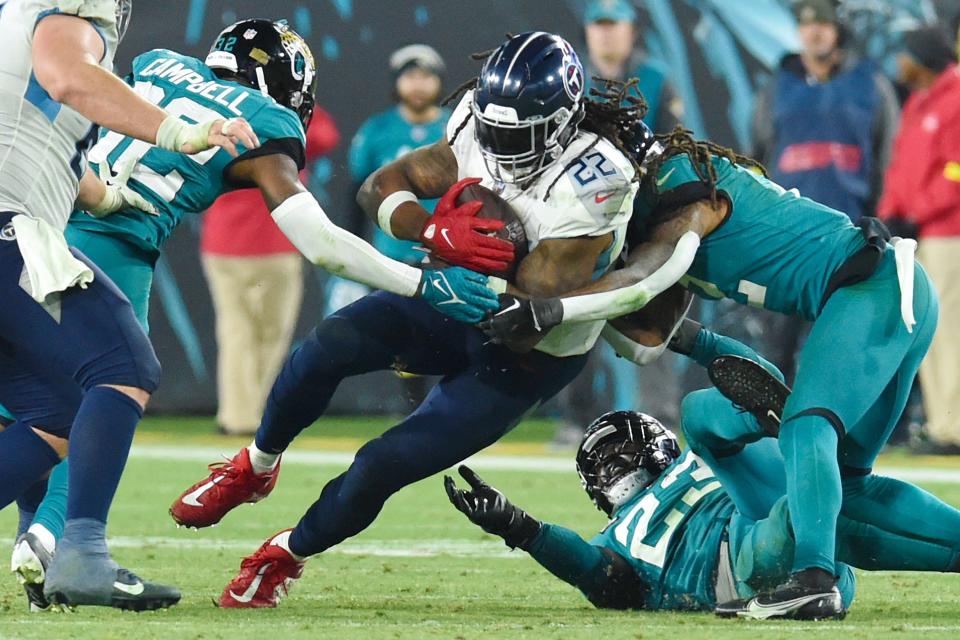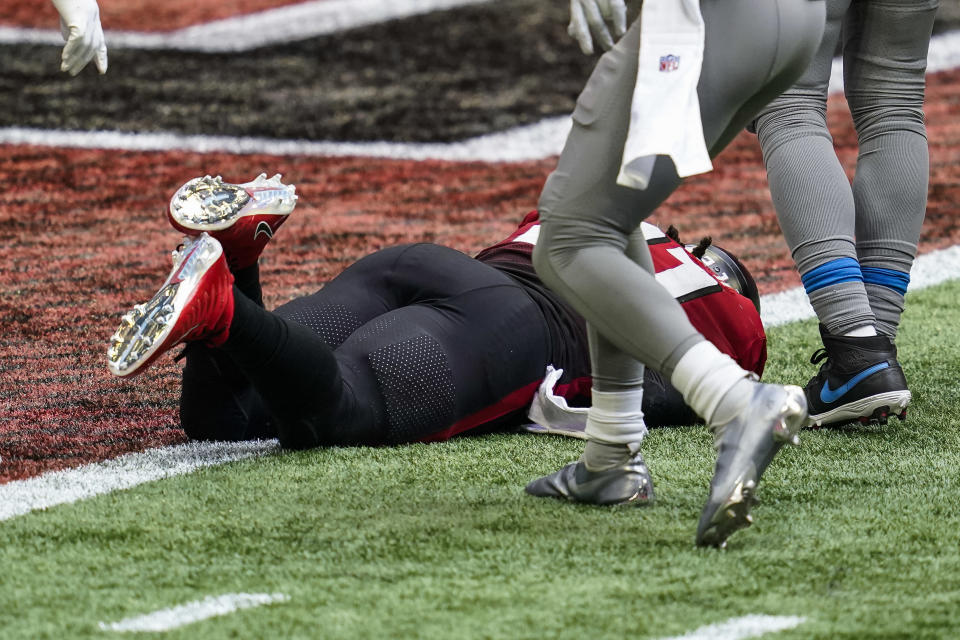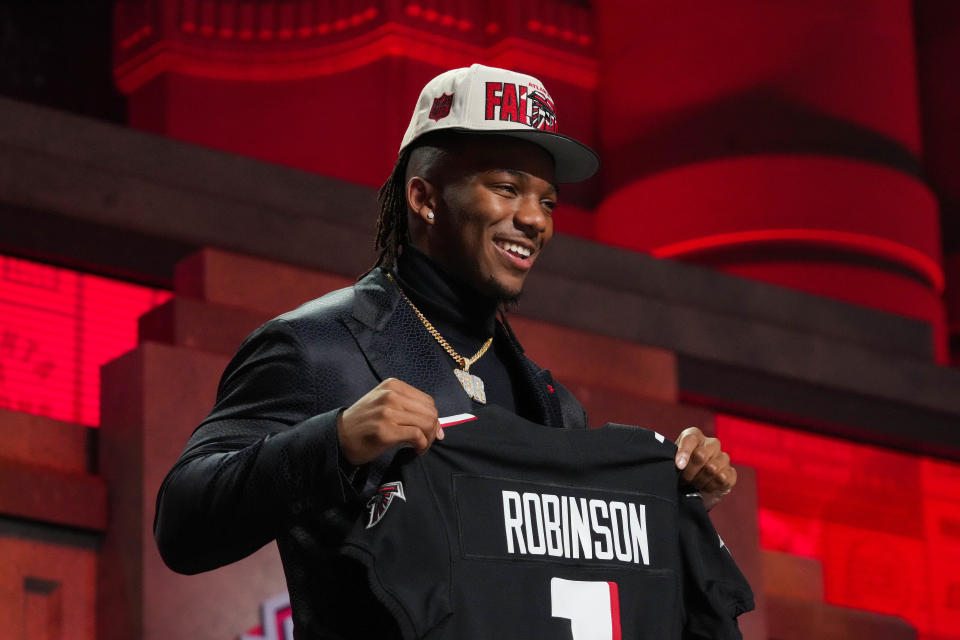The NFL’s running back problem, and how to fix it

In case you haven’t heard, the NFL has a running back problem. After several top bell-cows failed to get long-term contract extensions this offseason, an outcry from running backs across the league took place on social media about the abuse of the position. Per Spotrac, running backs on average, are earning less today than they did in 2005, even though the cap has gone up drastically in that 18 year period.
Not only are they making less as a position group than in years past, the average running back now makes about $400,000 less than the average kicker. In 2005, eight running backs made up 10 percent or more of their team’s payroll — no running back today makes up more than 5%.
So what exactly has caused this mass devaluation of a position that was once viewed as premium, to now being looked at as expendable?
The running back problem.
When it comes to the root cause of this epidemic with running backs getting paid, you can point the finger at multiple different factors. The CBA is the easy target, as everything that goes into contracts, money etc. was collectively bargained by the league and its players to be the way it is. However, I’d argue that there is a more overwhelming issue. Coming out of school, the top running backs are drafted by bad teams that expect them to change the direction of the franchise when, in reality, a running back can’t do that anymore. It’s a very different game from the 1990s when Barry Sanders single-handedly dragged the Lions to relevance for a decade.

You could even get away with it in the 2000s to some degree. Shaun Alexander helped take the Seahawks to a Super Bowl. LaDainian Tomlinson kept the Chargers in the Super Bowl conversation throughout his prime. That said, look at all of the league’s top running backs right now and the teams in which they were drafted. Saquon Barkley was drafted in 2018; the Giants have one playoff appearance since he arrived. The same can be said about Nick Chubb. Josh Jacobs just led the league in rushing, and it didn’t make any sort of difference for the Raiders in 2022 because the rest of their roster is poorly built. Jonathan Taylor had 1,800 yards and 18 touchdowns on the ground in 2021; the Colts missed the playoffs. Even Derrick Henry, who has dominated defenses over the last five years, can only do so much. The Titans went on one magic run with Henry to the AFC Championship Game, but aside from that, they have been a quick out in the playoffs, or missed out on the postseason completely.
The problem isn’t with the running backs, it’s with their teams and their poor idea of roster-building. Running backs in the modern NFL are best suited to be the missing piece that makes a good team great, not a franchise centerpiece that takes a bad team and immediately turns them into a playoff contender. The perfect example of that is Christian McCaffrey. He is arguably the best running back in football, and the Panthers had zero success during his tenure in Carolina. You put him in San Francisco, though, and he turns a good offense into a borderline unstoppable unit that now features three elite skill players at different positions.
The reality of fungibility.

On top of that, running backs have proven to be a dime a dozen in today’s NFL. Teams have figured out that there is no reason to take a running back in the first round of the draft when you can wait until the third round or later and potentially get someone who is just as good, if not better, and not have to pay him as much money. Then, when his contract comes up, you can tag him, and then restart the process for another four-year stretch.
That isn’t the only way franchises have gone around paying running backs, though, as several teams have leaned into the running back by committee approach rather than having a bell-cow take 20-25 carries per game. Take a quick scan of both representatives from last season’s Super Bowl. Both the Chiefs and Eagles had a rotation of three running backs who had at least 50 offensive touches in 2022. The Bears and Ravens were the NFL’s top two rushing offenses in 2022- neither of them had a running back rush for 1,000 yards or average more than 65 yards per game. It’s a system that is proven to work, and that’s not exactly great news for certain stars in which their team’s offense runs through.
Even when running backs end up in advantageous situations out of the gate, they are hung out to dry when the time comes to negotiate a new contract. Le’Veon Bell is the poster child for this argument. After being one of the top backs in the game for a four-year stretch, he held out when the Steelers wouldn’t give him the contract he was looking for, eventually took less money from the Jets before bouncing around the league and never coming close to replicating the success he had in Pittsburgh.
In 2018, the Rams gave Todd Gurley a four-year contract worth $57 million and $45 million in guaranteed money that would keep him under contract until 2023 — he was gone from the team after the 2019 season and last played for the Falcons in 2020. It’s because of those situations that owners are hesitant to pay running backs, even at the peak of their powers. Because how much better is that player realistically going to get? And now, because of that, we are seeing guys like Ezekiel Elliott (who had his own massive payday not pay off), Dalvin Cook. and Kareem Hunt not getting the kind of money they think they deserve on the open market. It’s a vicious cycle that needs to be addressed, but how?
Signing Day could solve the problem.

As already stated, the biggest issue when it comes to the payment of running backs is this weird loophole that owners have found in the CBA. It may not be fair that running backs rarely see big-time second contracts, but it was collectively bargained to be this way. So solution number one would be to simply wait until the next CBA negotiations ahead of the current CBA’s expiration in March of 2030.
The next option is as follows. If ground zero of this ongoing issue is the NFL Draft, then that’s where our attention on fixing it must go- disband the NFL Draft (stay with me, I’ll explain).
The NFL needs something akin to the NFL Draft from January through April. It gets way too much content and keeps the NFL at the forefront of discussion to just completely negate having an event at all. However, there is a way the NFL can have its cake and eat it too — NFL Signing Day.
It would quite literally be the same as high school athletes committing to respective universities. Give each team x amount of dollars to spend on rookie signees. The scouting process doesn’t change, teams can meet with whomever they want, as usual. The only thing that changes is the power goes to the players, and they get to choose where they will play. The coverage wouldn’t change at all. If anything, there is more uncertainty with this model than with the NFL Draft. For example. everyone projects Caleb Williams from USC will be the No. 1 overall pick in 2024 and go to whomever owns that pick.
With NFL Signing Day, however, he can go wherever he pleases, which could lead to bidding wars amongst teams to find their new franchise quarterback. There are no losers in this scenario. The NFL keeps a hot offseason commodity that is arguably more exciting than the draft, the players have a freedom of choice, and everything is at a level playing field for small-market teams because every team is given the same amount of spending money to exude on the class of rookies.
So, instead of having running backs go to teams that have poor roster-building front offices, they can go to a franchise that is closer to winning and perhaps just a player away from being a real contender. This would also put more value into the running back position if they do start helping teams win Super Bowls or make deep playoff runs, which in turn will earn them more money out of the gate.

